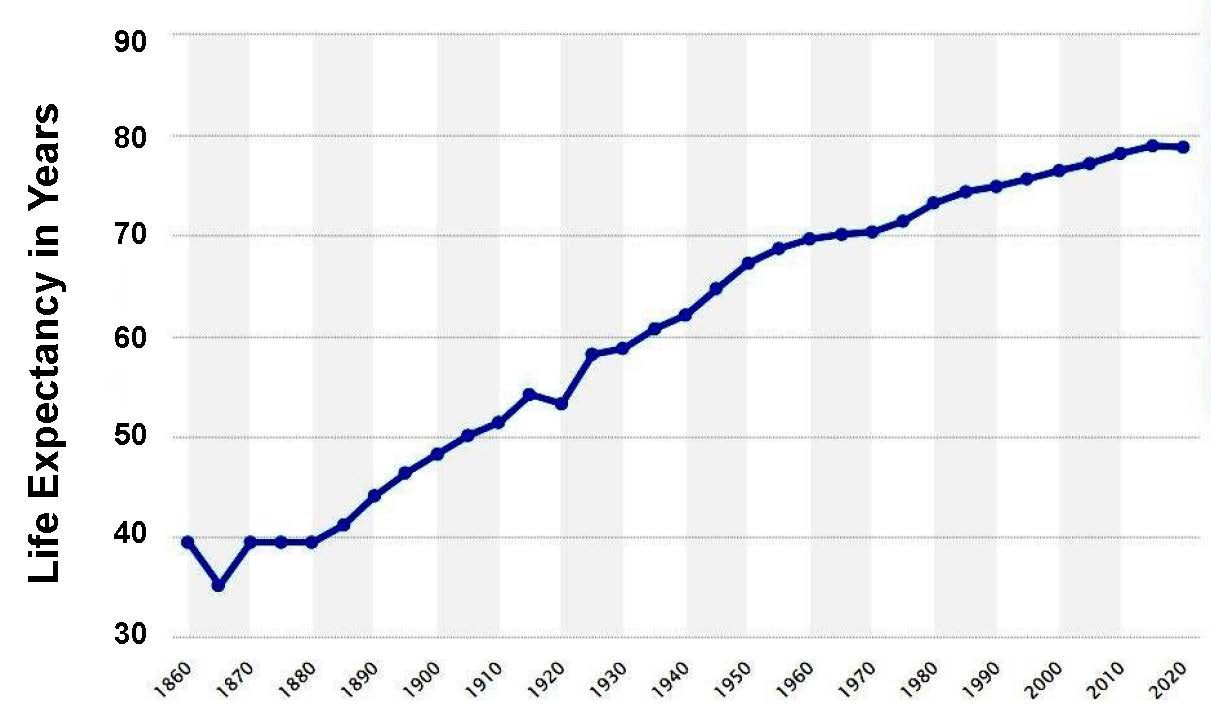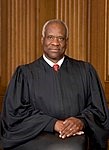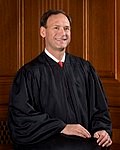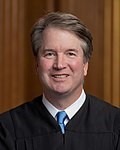The United States Supreme Court needs to be restructured as provided for in the Constitution in order to restore the respect and trust of the people of the United States that it is not a politically driven ideological tribunal or a Council of Guardians.
It is clearly time to restructure and reform the United States Supreme Court to better serve We the People and better achieve the objectives clearly stated in the Constitution:
“We the People of the United States, in Order to form a more perfect Union, establish Justice, insure domestic Tranquility, provide for the common defense, promote the general Welfare, and secure the Blessings of Liberty to ourselves and our Posterity, do ordain and establish this Constitution for the United States of America.”
Here is a set of proposals for the restructuring by Congress
- The United States has 12 Federal Court Districts. The size of the Court should be raised to 13, a Chief Justices and an Associate Justice for each district.
- The Justices shall have a 24 year term which would span 4 Senate terms or 6 administrations.
- Only two Justices would be appointed per administration term
- Legacy Justices would be retired on the basis of how many administrations for their tenure.
- Retired Justices would have to be determined roles and benefits
- On completion of a 24 year cycle, each administration would have 2 Justices terms expire and therefore appointments
- The Chief Justice appointed by the President will serve to the year of his life expectancy at time of appointment. If the Chief Justice dies in office, a Chief Justice shall be appointed by the President
- If an Associate Justice dies in office, a justice shall be appointed to fill out the unexpired term of the justice that died. At the conclusion of the unexpired term, a justice so appointed is eligible for appointment by the president to a term not to exceed their life expectancy at the time of appointment
- Only half the Justices may be drawn from Federal Appellate Courts.
- Justices of a specific religious affiliation may not constitute a majority of the Justices.
- Justice confirmation should not be subject to a filibuster and only require a Senate majority vote. The Senate shall hold hearings and shall vote on all nominees put forward by the President
I and others have been disturbed by the overturning of Roe vs Wade and other recent decisions because it demonstrates the US Supreme Court has become a religious and ideological tribunal dominated by six idealogues who play word games to justify their radical interpretations of the US Constitution.
The larger issue with “Roe vs Wade” is are there Constitutional Privacy Rights in the United States and are there rights to personal autonomy and to bodily autonomy? Roe vs Wade provided many benefits to the majority in the United States.
In the US version of democracy, there are basically two parties with each currently having about a 30% base vote with a 40% independent group that can swing in various directions. Since many Federal and State wide elections are now decided by a margin of a few percent, all the 10% divisive issues are a means for swinging the outcomes of elections. Many US states are now gerrymandered in favor of one party or the other and many state governments make it difficult to vote with objective of maintaining a minority ruling government. State oligarchies work to intimidate minorities into not voting. Fear is a major motivating force in US elections. The nature and positions of the parties keep changing over time. Up until George W Bush, the Republican Party used to be more progressive. For many decades, the Democratic party was dominated by Southern Democrats also referred to as Dixiecrat Jim Crow states.
The United States Supreme Court needs to be restructured as provided for in the Constitution in order to restore the respect and trust of the people of the United States that it is not a politically driven ideological tribunal.
Article III of the US Constitution establishes the federal judiciary. and gives to congress the power to structure and define the court. Article II Section. 2 gives to the President the role of appointing the Justices with the advice and consent of the Senate.
Article III, Section I
states that ” The judicial Power of the United States, shall be vested in one supreme Court, and in such inferior Courts as the Congress may from time to time ordain and establish. The Judges, both of the supreme and inferior Courts, shall hold their Offices during good Behaviour, and shall, at stated Times, receive for their Services, a Compensation, which shall not be diminished during their Continuance in Office.”
” Although the Constitution establishes the Supreme Court, it permits Congress to decide how to organize it. Congress first exercised this power in the Judiciary Act of 1789. This Act created a Supreme Court with six justices. It also established the lower federal court system.
Article II Section. 2.
The President shall be Commander in Chief of the Army and Navy of the United States, and of the Militia of the several States, when called into the actual Service of the United States; he may require the Opinion, in writing, of the principal Officer in each of the executive Departments, upon any Subject relating to the Duties of their respective Offices, and he shall have Power to grant Reprieves and Pardons for Offences against the United States, except in Cases of Impeachment.
He shall have Power, by and with the Advice and Consent of the Senate, to make Treaties, provided two thirds of the Senators present concur; and he shall nominate, and by and with the Advice and Consent of the Senate, shall appoint Ambassadors, other public Ministers and Consuls, Judges of the supreme Court, and all other Officers of the United States, whose Appointments are not herein otherwise provided for, and which shall be established by Law: but the Congress may by Law vest the Appointment of such inferior Officers, as they think proper, in the President alone, in the Courts of Law, or in the Heads of Departments.
The President shall have Power to fill up all Vacancies that may happen during the Recess of the Senate, by granting Commissions which shall expire at the End of their next Session.
About the Supreme Court
Overall, throughout its existence, the United States Supreme Court has been primarily a retrograde and repressive political entity aligned with oligarchy and negative societal interests. The court supported slavery, fugitive slave laws, Jim Crow Laws, business suppression of workers in favor of business and owner rights over all others. The Court supported Eugenics and discrimination. The dominance of shareholder value as the primary purpose of Corporations was advocated by the Supreme Court. Once again, the current Supreme Court is aligned with its historical character.
Justices routinely obfuscate their political intentions with the pretense that they have insight into the original meaning to the United States Constitution which in fact has been amended many times. They pick and choose phrases to project the political outcome that suits their ideology.
A good example of selective interpretation is the US Constitution 2nd Amendment. As written, it is very straight forward and its intent was to prevent the British Crown from re-establishing control and disarming the population. After the War of 1812, this threat has not recurred. Where the “Well Regulated Militia” Clause Came From
“A well regulated Militia, being necessary to the security of a free State, the right of the people to keep and bear Arms, shall not be infringed.” The Supreme Court changed the interpretation of the 2nd Amendment in the 1960’s so the white majority could arm itself as a response to the Black minority population starting to arm itself to seek to protect itself and gain civil rights.
In 1807 the British parliament passed the Abolition of the Slave Trade Act, effective throughout the British empire and in 1838 slavery was abolished in British colonies through the Slavery Abolition Act, giving all slaves in the British empire their freedom. The United States had to fight a civil war 1861-1865 to end slavery, but the slave holding states instituted state laws that effectively recreated a system of political and social subjugation that lasted for another one hundred years. Although one can pretend to be putting decisions on issues to a vote, special interests in the states have all sorts of mechanisms for defining who can vote and suppressing votes by those who would form a majority.
The Justices
Over the years, various Acts of Congress have altered the number of seats on the Supreme Court, from a low of five to a high of 10. Shortly after the Civil War, the number of seats on the Court was fixed at nine. Today, there is one Chief Justice and eight Associate Justices of the United States Supreme Court. Like all federal judges, justices are appointed by the President and are confirmed by the Senate. They, typically, hold office for life.
At the time the Constitution was written even up to the 1990’s the life expectancy of a male judge would have been between 75 years or less.
The salaries of the justices cannot be decreased during their term of office. These restrictions are meant to protect the independence of the judiciary from the political branches of government.
The Court’s Jurisdiction
Article III, Section II of the Constitution establishes the jurisdiction (legal ability to hear a case) of the Supreme Court. The Court has original jurisdiction (a case is tried before the Court) over certain cases, e.g., suits between two or more states and/or cases involving ambassadors and other public ministers. The Court has appellate jurisdiction (the Court can hear the case on appeal) on almost any other case that involves a point of constitutional and/or federal law. Some examples include cases to which the United States is a party, cases involving Treaties, and cases involving ships on the high seas and navigable waterways (admiralty cases).
Cases
When exercising its appellate jurisdiction, the Court, with a few exceptions, does not have to hear a case. The Certiorari Act of 1925 gives the Court the discretion to decide whether or not to do so. In a petition for a writ of certiorari, a party asks the Court to review its case. The Supreme Court agrees to hear about 100-150 of the more than 7,000 cases that it is asked to review each year.
Notes:
Life expectancy
Life expectancy (from birth) in the United States, from 1860 to 2020*

Life Expectancy by Age, 1850–2011
The expectation of life at a specified age is the average number of years that members of a hypothetical group of people of the same age would continue to live if they were subject throughout the remainder of their lives to the same mortality rate.
White males ………………Current Age + Expectancy
|
Calendar Period |
0 |
10 |
20 |
30 |
40 |
50 |
60 |
70 |
80 |
|
18501 |
38.3 |
48.0 |
40.1 |
34.0 |
27.9 |
21.6 |
15.6 |
10.2 |
5.9 |
|
18901 |
42.50 |
48.45 |
40.66 |
34.05 |
27.37 |
20.72 |
14.73 |
9.35 |
5.40 |
|
1900–19022 |
48.23 |
50.59 |
42.19 |
34.88 |
27.74 |
20.76 |
14.35 |
9.03 |
5.10 |
|
1909–19112 |
50.23 |
51.32 |
42.71 |
34.87 |
27.43 |
20.39 |
13.98 |
8.83 |
5.09 |
|
1919–19213 |
56.34 |
54.15 |
45.60 |
37.65 |
29.86 |
22.22 |
15.25 |
9.51 |
5.47 |
|
1929–1931 |
59.12 |
54.96 |
46.02 |
37.54 |
29.22 |
21.51 |
14.72 |
9.20 |
5.26 |
|
1939–1941 |
62.81 |
57.03 |
47.76 |
38.80 |
30.03 |
21.96 |
15.05 |
9.42 |
5.38 |
|
1949–1951 |
66.31 |
58.98 |
49.52 |
40.29 |
31.17 |
22.83 |
15.76 |
10.07 |
5.88 |
|
1959–19615 |
67.55 |
59.78 |
50.25 |
40.98 |
31.73 |
23.22 |
16.01 |
10.29 |
5.89 |
|
1969–19716 |
67.94 |
59.69 |
50.22 |
41.07 |
31.87 |
23.34 |
16.07 |
10.38 |
6.18 |
|
1979–1981 |
70.82 |
61.98 |
52.45 |
43.31 |
34.04 |
25.26 |
17.56 |
11.35 |
6.76 |
|
1990 |
72.7 |
63.5 |
54.0 |
44.7 |
35.6 |
26.7 |
18.7 |
12.1 |
7.1 |
|
1995 |
73.4 |
64.1 |
54.5 |
45.2 |
36.1 |
27.3 |
19.3 |
12.5 |
7.2 |
|
2000 |
74.8 |
65.4 |
55.7 |
46.4 |
37.1 |
28.2 |
20.0 |
13.0 |
7.6 |
|
20047 |
75.7 |
66.3 |
56.7 |
47.3 |
38.0 |
29.1 |
20.9 |
13.7 |
8.1 |
|
20117 |
76.3 |
66.9 |
57.2 |
47.9 |
38.6 |
29.6 |
21.5 |
14.3 |
8.2 |
The Current Supreme Court and Implications for their terms
|
John Roberts, Chief Justice |
|
Clarence Thomas |
Samuel Alito, |
Sonia Sotomayor, at age 79 |
Elena Kagan, |
|
Neil Gorsuch, |
Brett Kavanaugh |
Amy Coney Barrett |
Ketanji Brown Jackson, |
References
United States Constitution
About the Supreme Court
The Future of Supreme Court Reform
Essay by Daniel Epps & Ganesh Sitaraman Harvard Law Review MAY 30, 2021 134 Harv. L. Rev. F. 398
How to Save the Supreme Court
The Yale Law Journal 129:148 2019
Opinion The Supreme Court isn’t well. The only hope for a cure is more justices.
By Nancy Gertner and Laurence H. Tribe
Washinton Post December 9, 2021 at 5:01 p.m. EST
Science Editorial The court is lost H. HOLDEN THORP
SCIENCE 28 Jul 2022 Vol 377, Issue 6605 p.451 DOI: 10.1126/science.ade0780
How to save democracy from the Supreme Court
VOX Sean Illing interview with Prof. Niko Bowie Harvard Law School
8/5/2022 sean.illing@vox.com
Harvard Law Professor Niko Bowie Argues That The Supreme Court No Longer Cares About Its Own ‘Legitimacy.’ What Now?
8/5/2022 Chris Williams Above the Law cwilliams@abovethelaw.com

![John Roberts, Chief Justice since September 29, 2005 Age 67[12]](https://bachrachtechnology.com/wp/wp-content/uploads/2022/08/john-roberts-chief-justice-since-september-29-20.jpeg)







